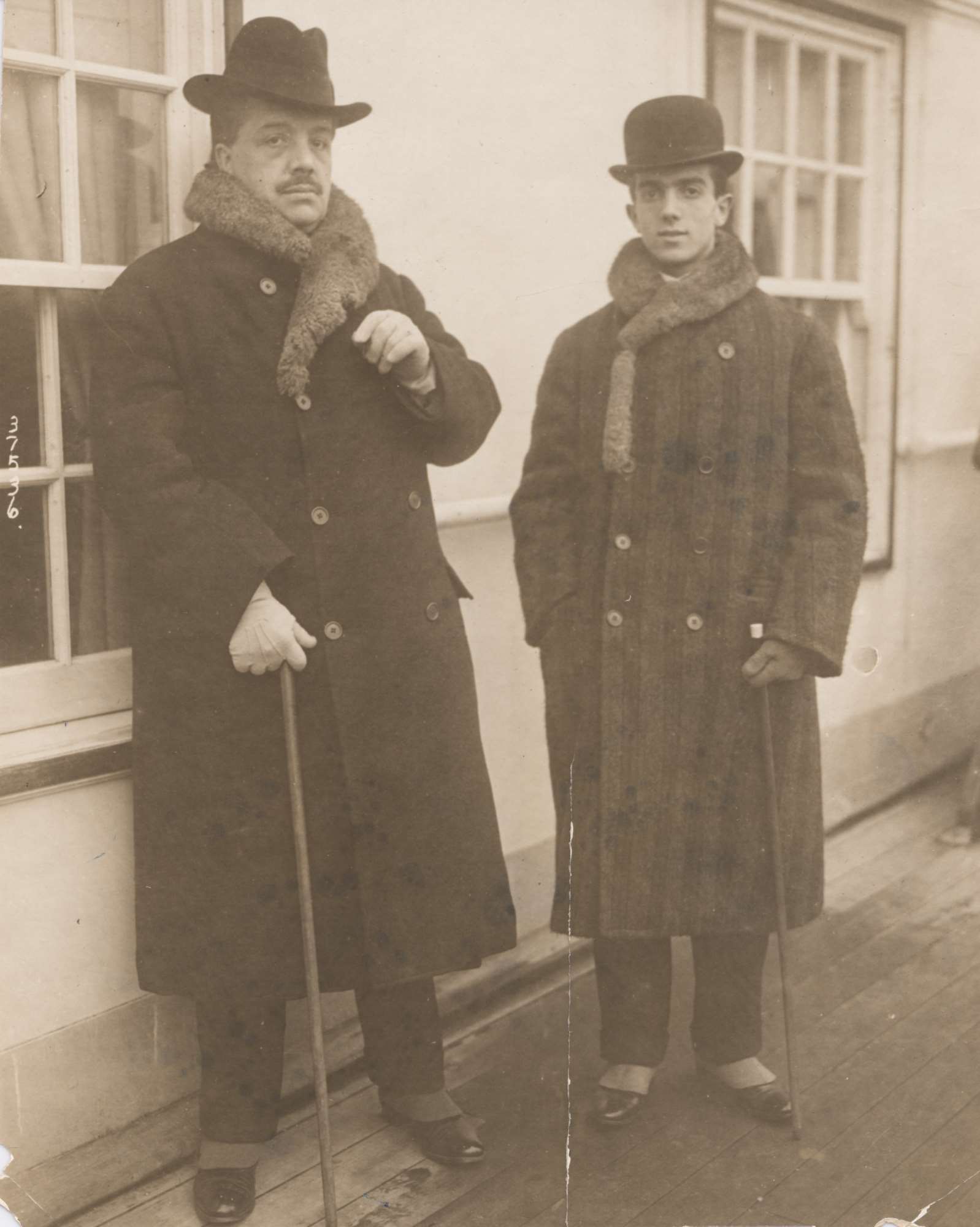people » Serge Diaghilev
Serge Diaghilev (1872-1929). Art connoisseur, Impresario and founder of the Ballets Russes
Serge Diaghilev was born in 1872 in Selishchi, south of St Petersburg, and was brought up in Perm, near the Ural Mountains. His mother died shortly after he was born and when his father remarried, his new wife loved and cared for Serge as if he were her own. She introduced him to music, at which he became proficient, and generally encouraged him in artistic appreciation.
In 1890, Diaghilev moved to St Petersburg, ostensibly to study law, but soon found himself immersed in intellectual gatherings with musicians, writers and painters. This gradually led to his decision to devote his life to promoting art. By 1897 he had organised his first exhibition of painting and founded the influential magazine Mir Iskusstva (World of Art). At first his aim was to open to Russians the art of Europe, while also presenting Russian art. From 1899 until 1901 he was the assistant to the Director of the Imperial Theatres, Prince Volkonsky, where, among many other duties, he was charged with the production and publication of the Theatre Annual. Diaghilev resigned from this post in 1901.
Following the last issue of Mir Iskusstva in 1904, Diaghilev concentrated on promoting Russian art, at first in St Petersburg and then, in 1906, in Paris and in the West more generally. This was undertaken with the involvement of the artists and stage designers Alexander Benois and Léon Bakst, both important future collaborators. In 1907 Diaghilev organised a series of concerts of Russian music in Paris, followed a year later with a production of the opera Boris Godunov starring the great bass Feodor Chaliapin. 1909 was the year of the first Ballets Russes performance in Paris, the beginning of a number of tours featuring dancers of the Imperial Theatre including Anna Pavlova (who left after the first tour), Vaslav Nijinsky and Tamara Karsavina, the choreographer Mikhail Fokine, with Bakst and Benois as designers, as well as the music of Borodin, Glazunov and the young Stravinsky.
For the next 20 years, until his death in 1929, Diaghilev was completely taken up with ballet. The Ballets Russes became an independent private company, which effected a complete transformation of the artform in Europe and his legacy reverberated throughout the rest of the 20th Century.
The history of Diaghilev’s Ballets Russes falls roughly into three phases. From 1909 until the start of World War I in 1914, the Ballets Russes was dominated by the choreography of Fokine. In 1910 there was the Russian fairytale of The Firebird (Stravinsky), and then the orientalism of Scheherazade (Rimsky Korsakov) and the Russian folklore of Petrushka (Stravinsky) following in 1911. Also in 1911 Le Spectre de la rose (Weber) appeared. 1912 saw the Greek-inspired Daphnis and Chloë (Ravel) and L’Après midi d’un Faune (Debussy), the latter choreographed by Nijinsky, much to Fokine’s ire. The following year saw the premiere of The Rite of Spring, with music by Stravinsky and choreography by Nijinsky, to much outrage and scandal, which only added to the excitement and publicity. The 1914 ballet season, which included no less than 15 Fokine ballets, saw the arrival of Léonide Massine on the scene, at first as a dancer.
The second phase of the Ballets Russes, 1914 to 1918, was a hard time for Diaghilev and his dancers, as many were dispersed by the war, though tours were eventually arranged to America in 1916 and 1917, and further performances took place in Spain. The Russian Revolution in October 1917 ensured that Diaghilev would never again return to his native country.
From 1919, now in its third and final phase, the Ballets Russes centred artistically in Monte Carlo and Paris. Enrico Cecchetti, the great Italian mime and teacher became ballet master and Massine the leading choreographer until 1921. As well as Mikhail Larionov and Natalia Goncharova, many leading artists from France became collaborators, including André Derain, Pablo Picasso, Henri Matisse, Georges Rouault, Marie Laurencin, Henri Laurens and Georges Braque. Stravinsky was joined by French and Spanish composers such as Manuel de Falla, Darius Milhaud, Francis Poulenc and Georges Auric. British and Irish dancers joined the company, including Alicia Markova, Ninette de Valois and Anton Dolin, as well as Russians who had escaped the Revolution, such as Alexandra Danilova and Serge Lifar. Diaghilev continued to champion Massine, but also commissioned choreography from Bronislava Nijinska and George Balanchine. Ballet became fashionable, international and an integral part of the artistic and musical avant-garde. Notable works from this period include Massine’s La Boutique Fantasque (Rossini/ Derain) and Le Tricorne (de Falla/Picasso) in 1919, Le Chant du Rossignol (Stravinsky/Matisse) and Pulcinella (Stravinsky/Picasso) in 1920; and Nijinska’s Les Noces (Stravinsky/Goncharova) in 1923, Les Biches (Poulenc/Laurencin) and Le Train Bleu (Milhaud/Jean Cocteau/ Laurens/Picasso/Coco Chanel) in 1924. Later, there was Balanchine’s Apollo (Stravinsky/Chanel) in 1928 and finally, in 1929, The Prodigal Son (Serge Prokofiev/Rouault).
A homosexual, Diaghilev had intimate relationships with a number of the dancers and choreographers he worked with, including Nijinsky, Massine, Dolin and Lifar. From the start he and his choreographers had raised the male dancer to a prominence equal to that of the ballerina, while at the same time raising ballet itself to a new artistic level. In doing this, and in doing so involving the leading musicians and artists of the time, he laid a pathway for future great choreographers and thus for future of ballet itself as a major art form. Serge Diaghilev died in Venice in 1929.

